公司名称:Coherent,Inc.(COHR)
会议时间:2020年5月27日
安迪·马特斯(Andy Mattes)
在世界抗击疫情大流行且我们大多数人都处于待命状态的时期内,以首席执行官的身份加入公司是一次真正独特的经历,并且是未知的领域。在虚拟世界中与我的公司打交道已经很长的时间了,但是却出奇地富有成效。
我已经与我们的前20名客户中的大多数进行了交流,通过虚拟游览访问了我们的许多站点,并与Coherent的前100名经理进行了联系,并与全球各地的员工进行了多次虚拟咖啡对话。当我收到客户关于我们的服务质量、产品性能以及客户在使用Coherent设计过程解决方案时所重视的高度协作的反馈时,我感到非常振奋。我必须承认,我们的全球同事在远程工作的新常态中展现出的才能,奉献精神以及最重要的参与水平给我留下了深刻的印象。
作为领导团队,我们在过去几周将精力集中在员工的健康状况,公司的财务状况以及与客户和供应商的合作关系方面。在新任命的首席运营官Mark Sobey的领导下,我们建立了中枢神经中心,即COVID指导委员会或CSC。公司所有高管每周召开多次视频会议,以掌握全球不断变化的情况和安全协议,同步我们的行动和响应,以实现稳定的供应链和物流,讨论关键零件的库存并达到期望的客户交货日期。在4月和5月的大部分时间里,我们遵守了所有与社会隔离的规定,将产能保持在产能的约85%至90%。 CSC现在将重点转移到让员工安全地工作,如何将远程工作纳入公司的新常态,以及如何围绕协作,灵活性,包容性和责任感加速最佳实践共享。
在我进一步谈论我们前面的道路之前,让我将麦克交给凯文讨论第二季度的结果和指导。
凯文·帕拉特尼克
今天,我将首先概述2020财年第二季度的财务业绩,然后再介绍第三财季的前景。我将主要讨论非GAAP财务业绩,并请您参考今天的新闻稿,以详细说明我们的GAAP业绩以及GAAP与非GAAP财务业绩之间的对帐。非美国通用会计准则的调整涉及以股票为基础的补偿费用,无形资产的摊销,商誉和其他长期资产减值,重组费用,相关的税项调整以及以股票为基础的补偿的税项调整。今天准备好的评论全文以及GAAP和非GAAP补充财务信息的最新趋势将发布在Coherent Investor Relations网站上。通话后约90天,还将播放此网络广播的重播。
2020年第二季度公司主要经营指标的财务业绩,为总收入2.931亿美元,非公认会计准则毛利率为36.2%,非公认会计准则营业利润率为8%,调整后EBITDA为11.9%,非公认会计准则每股收益为0.61美元。
第二财政季度的总收入为2.931亿美元,处于我们先前指导范围的低端。第二季度,销售受到主要在亚洲的COVID-19大流行的负面影响,并在本季度晚些时候开始影响欧洲和北美。我们估计本季度对收入的影响约为3000万美元至3500万美元。
我们第二季度的市场收入组合为微电子42%,材料加工29%,OEM组件和仪器22%和科学7%。从地理位置上看,第二季度亚洲占收入的48%,美国占25%,欧洲占22%,世界其他地区占5%。亚洲包括两个地区,欧洲包括一个地区,其收入超过销售额的10%。我们在韩国拥有一个与大型平板显示器制造相关的客户,该客户贡献了第二财季收入的10%以上。
第二财季来自其他产品和服务的收入为9900万美元,约占销售额的34%。其他产品收入包括零配件,相关配件和其他消耗品,约占销售额的29%。服务和服务协议的收入约占销售额的5%。服务总收入比上一季度减少了约1800万美元,这主要是由于停工和冠状病毒影响地区的旅行限制而无法为已安装的基地提供服务。
不计基于股票的补偿费用,无形资产摊销和重组,第二财季非GAAP毛利润约为1.06亿美元。第二季度的非GAAP毛利率为36.2%,略低于我们先前指导范围的中点,这主要是由于与较低产量相关的更高制造成本。
非GAAP运营费用从众多项目中减少了约900万美元。重大项目为可变支出减少,差旅相关支出以及与我们的递延补偿计划相关的费用收益。因此,第二财季的非GAAP营业利润率为8%,处于我们先前指导范围的高端。第二季度调整后的EBITDA为11.9%。
转到资产负债表。截至第二季度末,非限制性现金,现金等价物和短期投资约为3.69亿美元,比上一季度末增加约1900万美元。鉴于我们在全球经济相对不确定的时期内专注于现金保全,因此根据我们目前的回购授权,我们没有在第二季度回购任何股票。我们也没有对我们的定期贷款进行任何自愿付款,在第二季度末,未偿还的定期贷款美元金额约为3.9亿美元。
应收帐款DSO为62天,而上一季度为66(标准)[68]天。在第二财政季度末,净库存余额约为4.57亿美元,增加了700万美元,这主要是由于COVID-19导致部分客户的运输和接收部门关闭而导致成品增加。
不计基于股票的补偿费用,无形资产摊销和重组,第二财季非GAAP毛利润约为1.06亿美元。第二季度的非GAAP毛利率为36.2%,略低于我们先前指导范围的中点,这主要是由于与较低产量相关的更高制造成本。
非GAAP运营费用从众多项目中减少了约900万美元。重大项目为可变支出减少,差旅相关支出以及与我们的递延补偿计划相关的费用收益。因此,第二财季的非GAAP营业利润率为8%,处于我们先前指导范围的高端。第二季度调整后的EBITDA为11.9%。
转到资产负债表。截至第二季度末,非限制性现金,现金等价物和短期投资约为3.69亿美元,比上一季度末增加约1900万美元。鉴于我们在全球经济相对不确定的时期内专注于现金保全,因此根据我们目前的回购授权,我们没有在第二季度回购任何股票。我们也没有对我们的定期贷款进行任何自愿付款,在第二季度末,未偿还的定期贷款美元金额约为3.9亿美元。
现在,我将转向2020年第三季度的展望。
首先我要说的是,在未来几周和几个月内,全球需求将如何变化尚无定论。这种不确定性使得在短期内预测我们的业务充满挑战。但是,强大的资产负债表和现金状况为我们应对未来与冠状病毒相关的持续干扰提供了极大的灵活性。
话虽如此,第三财季的收入预计将在2.65亿美元至3.05亿美元之间。我们预计第三季度的非GAAP毛利率将在30%到34%之间。非GAAP毛利率不包括约220万美元的无形资产摊销和170万美元的股票补偿成本。
第三季度的非公认会计准则营业利润率预计在1%至5%之间。这不包括估计总计290万美元的无形资产摊销和总计大约1,610万美元的股票补偿费用。其他收入和支出估计为500万至600万美元。我们在OI&E的前景中不包括与未来汇率变化相关的交易损益。
我们预计我们第三季度的非GAAP税率将在17%至18%之间。最后,我们假设第三财政季度的加权平均流通股约为2420万。
现在,我将呼叫转回给Andy。
安迪·马特斯(Andy Mattes)
谢谢你,凯文。除了财务数据,让我在您所服务的主要市场上做一些介绍。
从微电子学开始。这里有两种截然不同的动态。一方面,由于消费者支出的放缓导致智能手机的业务的下滑,这在显示方面产生了不利因素,随着晶圆厂利用率的下降,这影响了我们的短期服务收入,另一方面,半导体业务的实力也因此而下降到电信,云和数据中心投资,考虑我们的Zoom经济,以及业务向笔记本电脑的转变。
针对显示器,多家笔记本电脑制造商最近宣布它们现在将OLED显示器作为其高端型号的选择,令我们感到鼓舞。我们认为,这种趋势可能会持续下去,特别是随着中国客户收益率的提高以及他们有能力随着时间的推移使定价与LCD更加保持一致。我们还对即将到来的向支持5G的移动设备升级周期持乐观态度,这是因为薄型柔性OLED屏幕与5G功能之间的联系似乎很高,这是因为需要更大的电池来占据更多设备体积,从而为更短的电池供电范围,更高频率的天线。
继续进行材料处理。甚至在最近发生COVID大流行之前,德国汽车和机床行业就已经出现了广泛报道的增长放缓,并且整个市场看到与COVID对消费者需求的影响相关的进一步疲软。关于中国早日复苏的报道好坏参半,我们仍然谨慎地观察这种情况如何发展。总的来说,相干公司在中国的材料加工业务要少于美国和欧洲市场,而我们的核心实力是在非金属切割和焊接应用领域中更专业的行业,在此领域,我们在CO2和二极管激光器方面的实力仍然很高。差异化因素。
总体而言,由于我们在生命科学研究,临床诊断和治疗程序(基于选修课和保险学)的各种应用领域实现了多元化,因此仪器仪表业务仍然保持强劲增长。我们为许多生命科学客户的高端仪器在疫苗开发和抗COVID的免疫学研究以及临床应用中的使用感到兴奋。我们已经看到,某些客户的需求达到了两倍。相反,相同的客户向世界各地的研究实验室出售与非COVID相关研究相同的仪器,并且其中许多实验室和大学已经关闭,并且对于这些客户,新系统的需求有所放缓。现在,在全球范围内,与COVID相关的对非紧急医疗程序的限制正在放松,我们的治疗医疗客户正在看到良好的反弹。
由于大学和实验室已基本关闭,科学市场部分基本上花了一些时间。我们希望随着科学机构的重新开放和对未动用研究经费的需求已被抑制而开始流动,这一部分将会恢复。
国防一直是一个不受影响的领域,仍然是Coherent的投资领域。我们在从定向功率应用的激光放大器到特种轻型航空光学器件的众多机遇中处于有利地位。我们已经获得了著名的主要承包商的重要设计大奖,这些承包商向武装部队提供了武器,我们认为这是公司前进的领域。
我们的第2季度账单比率显着高于1季度,并且该季度末的积压订单比上一季度有所增加。没有人知道COVID-19将对全球经济产生多长时间的影响,但是在我们的积压订单和资产负债表之间,我们认为Coherent在接下来的几个季度中将处于稳定的位置。
话虽如此,我们正在将近期行动集中在现金产生上。尽管我们尚未做出任何最终决定,但我们目前正在分析各种关键步骤,并且展望未来,我们将启动我们的“由好到伟大”转型,其中包括一些正在进行中的行动,以及纳入新的行动,包括应用我们的业务策略是:只有在我们有视线达到1号或2号地位的情况下,我们才会参与细分市场,否则我们将重新集中精力。与该策略一致,我们将不会参与千瓦光纤市场,价格竞争不会触底,因此我们将完成从商品光纤激光器市场的转移。取而代之的是,我们将专注于技术优势将在市场上获得回报的领域,例如微电子,生物仪器和医疗设备制造。此外,我们知道OLED显示器仍在未来,但将基于许多激光工艺步骤,因此将在OLED市场上加倍投入并利用我们的领先优势来推动诸如micro LED显示器等技术的进步。最后,我们将简化我们的公司,从组织机构设置到地点数量,再到我们运行和报告财务状况的方式。如您所见,我们还有很多暑假作业。几个月后的下一次电话会议,尤其是当我们宣布第四季度业绩并进入10月份的新会计年度时,我们将有更多的分享我们的“由好到伟大”转型。
QA
Q
你好,下午好,我有个问题我想知道,预订量是连续增长的,还是说你只是指预订量普遍强劲,预订量与销售额的强劲,而不是你报告中预期的较低的收入水平?
A
我们在几年前就不再谈任何类型的详细的预订量了。所以,当我们讲到book-to-bill的时候,是在季度内,当前看Q2的账单到季度内的预订量。
Q
您能否谈谈您是否看到了中国OLED领域的预订活动?
A
在此我将不提供很多详细信息,因为从预订的角度来看,我们只是将其与FPD或微电子产品隔离开来。但是,与上一季度和前两个季度一样,我们确实在季度中接受了ELA工具的订单。
Q
如果可以的话,如果我没听错的话,听起来您在本季度看到了COVID带来的更大影响。如果我正确地得到了数字,我想你说的是在2000万到2500万美元之间。您是否说过,这大约是3000万到3500万美元?
A
没错
Q
您是在中国看到了更大的意图,还是仅仅是在其他地方(欧洲和美洲)的早期影响在中国造成了更大的冲击?
A
它比我们预期的要大。我想说的是,我们未能意识到的是,在我们的某些科学和OEM仪器领域中,大学和研究实验室确实完全关闭了。实验室和/或大学里的工作人员无法接近,无论是运送和接收,还是实验室人员本身都无法接收产品,因为他们不在那儿。因此,我认为我们确实低估了这一点。
Q
当您开始不强调某些产品领域(包括千瓦光纤激光器)时,您能给我们一些提示吗?我知道业务并不一定那么有意义。但是,您能否使我们有所了解,这将对收入产生什么样的影响?
A
在这里我不想在电话里谈那么多细节。我们还在分析业务的不同部分,以确定我们要在哪里投资。我想,一旦我们有了这些数据,我们就可以更坦诚一些。但是,就像我们过去讨论过的那样,商品纤维对我们的业务的贡献非常小。
Q
我想我的第一个问题就是关于收入确认的轨迹。您连续获得3个ELA订单。而且您已经看到一段时间了,交货时间大约是六个月。第一,交货期和你过去提供的6个月的交货期相比有什么变化吗?第二,假设没有,从几个季度前你看到的订单来看,ELA工具在几个季度前的周期开始的时候,似乎会在第三季度开始看到收入,到第四季度肯定会看到收入。但随后,利润率指导似乎有点轻,因为有一些ELA高利润率的工具在那里。所以,我只是想知道,我们应该注意的交货期、出货轨迹和回收时间有什么变化吗?
A
实际上我们已经接受了过去四个季度的订单。我们确实说过,从交货时间的角度来看,这至少需要6个月的时间。因此,当我们调查下半年时,我们已经给出了下一个季度或6月季度的指导,并且持平或略有下降。但是使用COVID时,只需将COVID视为将事情延迟了四分之一左右即可。但是,我们应该回到前进的轨道上。
Q
您是否会说,这些延迟是完全以客户为中心的,还是全面延迟?因为我要问的原因是您显然在您的中国产品组合中有一些客户,这些客户直接位于武汉,COVID危机首先在那儿发生,然后您在中国其他地区有客户,其影响可能是外围的或间接的。因此,您是否看到延迟水平整体上还是相当广泛的,还是更多地集中在产生直接影响的少数制造商中?
A
你说的没错。我们的主要客户之一或者是我们的主要客户之一,CSOT在武汉。你也知道,武汉市停业了两三个月。所以,我想说,主要是以地域为基础,指的是武汉。那里有几个客户,CSOT是其中较大的几个客户。但是,考虑到停产,你会预计会有一个延迟,大概是四分之一。
Q
您能否评论一下整个客户群看到的利用率?显然,由于COVID危机,我们在中国第一季度日历的不同部分进行了下调。然后,您在世界其他地方提到,您开始看到冲击对中国的影响。但是,您在哪里看到利用率?他们恢复得有多快,尤其是在中国?然后,我们应该如何考虑将其转化为第三季度的服务收入并持续一年呢?似乎我们已经有一段时间没有看到低于1亿美元的服务收入了。那么,这是一个低谷吗?只是想知道该指标在一年余下的时间内能恢复多快?
A
我无法了解特定的客户及其收益。我的意思是,这是他们的专有信息。我当然不想在电话上谈论它。可以说,感觉产量正在提高。中国一家大型OLED制造商之一已经表示,他们预计今年将出货7,000万台显示器,而去年的出货量可能是500万到1,000万。我认为这是在提高收益的基础上进行的。
就服务收入而言,正如我在准备好的发言中提到的那样,我们确实有一些现场服务工程师无法进入中国和维修设备,这给我们造成了1800万美元,1900万美元左右的损失。考虑到中国已经重新开放,或者在很大程度上已经重新开放,我预计第三季度会有所反弹。当我们考察韩国时,韩国也受到了影响。因此,我们可能不会看到完整的回弹,但第三季度会有所改善。
Q
我的第一个问题与你们在本季度收取的减值费用有关。您说这与工业激光器和系统业务有关。您能具体一点吗?显然,这是一笔更大的费用,我认为这笔费用与该业务相关的费用加4亿美元。
A
关于减值,有一个多步骤的过程要经过。我不会把你拖到那泥泞中。可以说,当某项业务的账面价值与该业务的公允价值相比较时,当公允价值较低时,您必须记账或减值。特定于业务,它影响了ILS细分市场。 ILS领域主要是激光器的工业方面。因此,它包括工具业务,光纤业务,二极管和光纤组件。全面。但同样,关键是我们评估业务时,公允价值小于账面价值,这就是我们计提减值的原因。
Q
您只是真正专注于现金产生的关键领域,并在准备好的发言中指出了这一点。您发表评论说,如果您能够获得一两个职位,那么您只会真正参与该细分市场。您评论了光纤激光器业务,您将摆脱该业务的非战略性部分。但是,您能谈谈一般激光业务吗?您认为从长远来看,您可以担任一两个职位吗?如果不是,那么您认为替代方案是什么,如果那不是您认为可以竞争的领域?
A
但是,我们认为我们有一些非常独特的立场。当我与客户交谈时,让我以医疗器械网站为例。现象市场的占有率,我们显然是市场的领导者,机遇很多,声誉很高。这是我们要追求的市场类型的完美示例。那里有很多机会。我们面临的任务是确保我们专注于能够充分发挥我们的技术优势,我们的能力,为客户量身定制非常特殊的制造或测试过程的能力以及我们可以在非常快速的发展中发展的领域不错的保证金配置文件。
Q
如果你看一下你们刚才指导的出炉季度,营收比季度没有什么变化,只是略有下降。你们刚才提到,本季度制造业的产能大概会在85%到90%左右。毛利率的下降是否仅仅是混合的结果,还是其中一项业务中的一个移动部分拖累了整体的毛利率下降?
A
有几个因素造成的。当然,随着收入的不断下降,产量会受到影响,因此制造成本也会上升。仅就COVID而言,我们必须实施的业务连续性计划,以及我们必须实施的业务连续性计划、分散化、PP&E等等,等等,这些都要花钱,而这要花50到60个基点。除此之外,随着发电量下降,我们手头还有库存,由于发电量下降,我们可能不得不从库存中提取一些准备金。所以,所有这些都会对利润率产生影响。
Q
第一个问题是,您如何看待中国的机会,这将如何影响混合毛利率?
A
如果您选择中国,并且按照我们的细分市场,不用说,OLED及其周围的一切都非常非常有利。如果您选择另一端,则我们在中国的材料加工业务规模相对较小。我在准备好的发言中强调了这一点。在这些类型的业务方面,我们在欧洲或美国变得更强大。中国的科学市场也很强劲,但是中国大学与西方大学一样被关闭。因此,该市场实际上在上个月没有发生。随着大学刚刚开始重新开放,您会看到这一流血进入本季度。因此,我们在中国的大部分机会都位于微电子市场和半导体市场。
Q
对利润率有什么影响?
A
这又回到了我们之前说的。我们希望在我们的地位能得到回报的市场中进行游戏。而在那些我们有很强的代表性的细分市场,我们也享受到了利润率的优势。
Q
在您提到的OLED机会上,你们正在使OLED加倍。您如何看待中国与韩国的未来?您还可以评论Micro LED吗?
A
在安迪(Andy)的准备讲话中,他确实谈到了微型LED。您可能很熟悉,这是一个非常耗时的应用程序,因为您必须将LED拾取并放置到显示基板上,但是这样做时要使用激光。我们已经在该领域出售了一些开发设备。当我们在OLED中使用ELA工具享有我们的地位时,我们希望在提供给micro LED的工具中享有相同的地位。
Q
您如何看待下半年的利润率?
A
如果您回到2016年,即OLED斜坡的第一阶段,即'17和'18,您会看到积极的向上压力。主要是基于OLED的增长,我们一直说ELA工具(微电子)总体上可以提高公司的整体利润率。因此,随着我们运送更多这些机器,这将对利润率产生积极的上行压力。
Q
此前重点一直放在转型或重新定位公司以实现增长。您是否将Coherent视为这种类型的项目,还是只是专注于微调?
A
如果您看一下我们的转型工作,这就是我将其称为“从好到伟大的转型”时要表达的意思。 Coherent是一家非常优秀的公司。话虽这么说,但是像任何公司一样,我们业务中的某些领域可以做得更好,我们可以将卓越运营和执行力加倍。尽管COVID会在这里,在那儿,在第一线以及消费者的反应速度上打上问号,但成本方面的一切都完全在我们的控制之下,因为我们可以立即在这里和现在解决这些问题,整个夏季都将这样做,我们会尽快为您更新。
其次,在中期,我们正在尽一切努力使公司处于有利可图的增长轨迹。我全心全意地相信,没有一家大公司在缩水。因此,我们将确保在摆脱这种大流行的环境后,我们将恢复盈利增长。
Q
我不太确定我们是否具有很好的可见性或任何变化,我的意思是COVID会产生影响。但是,就未来几年OLED的开放轨迹而言,无论是细微的还是更多的材料,您是否看到任何变化?许多工作都是在供应方完成的,但是如果需求减少,如果您遇到的环境更慢甚至是随意的,并且对新手机和OLED手机的需求减少,则可能会减少供应的增长侧?
A
对于OLED来说,故事没有改变。我们继续看到我们面前的OLED坡道。实际上,最近,我们得到的数据是,尽管有OLED屏幕,但高端的笔记本电脑却有18种。因此,我们看到了OLED从移动设备到笔记本电脑的发展。我们预计平板电脑将是下一个。因此,就我们的波动理论而言,第一波是移动计算,在手机中,第二波和第三波是平板电脑,笔记本电脑,汽车,如果可以的话,我们认为这条路没有任何改变。而且,目前有OLED的笔记本电脑制造商也为我们感到鼓舞。
Q
关于材料加工的另一个更大的问题是,第二大业务本身。我意识到那里有很多子市场。就像您在准备好的发言中提到的那样,在过去的几个季度中,随着全球经济的波动,当然情况并不好。显然是在COVID-19之后,我认为工业生产的水平将低于我们。所有人都在估计它的发展趋势,进展情况以及反弹幅度。但是,即使在未来12到18个月工业生产环境低迷的情况下,你们仍然可以提高性能。
A
这又回到了我们从 "好 "到 "伟大 "的转变。我们确实看到了改进的空间,尤其是在ILS方面,当涉及到我们的利润率时,当涉及到我们的工厂装载时。而且,我们以接近市场和客户的方式为我们的系统和工具应用和发明一种经常重复使用的类型,这将自动对我们的利润率产生积极的影响。
Q
刚刚有一个关于供应链的问题。您是否因为病毒而受到任何供应链问题的影响?
A
从供应链来看,影响非常小。我们与全球排名前10位的所有供应商合作,确保要么提前购买,要么他们有足够的供应量以确保在第二季度,第三季度及以后的时间为我们提供产品。因此,我们在那里处境良好。
Q
你提到5G正在成为你的一个机会。我猜想那是因为更高密度的硅将需要更小的微电子,可能过渡到新型的激光器,这是是开始回暖还是5G在另辟蹊径?
A
不仅是在微孔中,可以在板上放置更多内容,而且还与天线本身有关。天线体积更大,需要更多功率。因此,如果需要,系统需要更多的电池。而且因为OLED比LCD还要薄得多,所以由于它的厚度,您可以装入更多的电池。因此,就给公司带来的好处而言,有许多因素可为5G做出贡献。就我们所看到的而言,我们看到的是一点点回升,但它摆在我们面前而不是我们身后。
Q
我可能错过了。您是说经营现金流为1900万美元,还是只是增加现金?我只是想知道来自运营的现金是多少。
A
现金增加了1900万美元;来自运营的现金为4,700万美元。
Q
关于指南的问题,凯文,你能依次桥接指南吗?你的假设对COVID的影响有多大?是否可以合理地假设可能来自大学和材料加工带来的科学和政府问题的最大的冲击?
A
从收入的角度来看,同样是一个小幅下降的季度。是的,有一些预期,实验室会开放,大学会开放,问题是时间问题,对吗?所以,会在6月份的季度出现。有些到现在为止还不愿意开放。所以,会影响到收入。
在毛利率方面,肯定是由于销量减少导致单位成本上升。但是就COVID及其影响而言,我之前提到过,当您查看安全距离,人员实际距离,轮班制,多班制,保护员工的所有必要条件时,我们要付出50至60个基点的利润。
Q
从顶线角度来看,COVID影响的规模是否与3月份季度相似,大约等于或少于3000万美元?
A
我会怀疑它大概在30到35之间,甚至更小。
Q
切换到FPD。在上个周期,你有一个大玩家。而如果你看一下出货的轨迹,确实是一个非常平稳的,然后是装运中的取货订单。那么,现在这个周期反映出多个玩家,可能会达到八九个,现在你能不能分享一下你的看法,现在你有几个订单,而且你的手下有一个像样的积压,你能不能分享一下?我们应该如何看待未来12-14-24个月内的线性交付?投资者应该期待与上个周期类似的轨迹,还是要稍微有点波澜不惊?
A
就16、17、18时期的第一大客户而言,他们不仅向我们下了非常大的订单,而且还是多年的订单。因此,我们可以与该客户合作,并真正计划一段时间内的出货量。正如您提到的,第二阶段还有更多的客户,这显然与中国有关。我们尽力帮助他们计划接收设备。但是,我不希望我们在'16,'17和'18中看到同样的增长。除此以外,我无法进一步详细介绍。我们以前从未分享过。但是足以说,我认为这不会像过去几年那样剧烈。
Q
然后,在材料加工方面,您说过关于中国复苏的报道不一。我认为3月和4月比较强劲。但是,您是说您正在看到五月订单可能在复苏中趋于稳定,从而势头放缓吗?什么是造成中国材料加工复苏的迹象?
A
坦白说,在中国方面,我们比其他同行更为谨慎。到处都有一些指标,表明情况有所稳定。但是正如您可能已经看到的那样,各个省份都有一些与COVID相关的爆发。因此,我们比与中国有关的一些同行更加谨慎。
Q
我认为您已经宣布了新的一级汽车大奖,即设计大奖。而且我相信这与EV电池焊接有关。您能否给我们提供您所看到的任何更新,这些客户的订单可能开始增加?您能否总体评论一下德国和中国的电动汽车环境,以及您如何看待未来6到12个月的前景?
A
当您查看特殊材料的焊接时,这就是我们的技术,特别是我们的ARM激光器在市场上具有非常独特的优势。我们可以做到这一点,甚至没有改善,这是整个电动汽车市场的一个非常重要的组成部分。因此,在我们发言时,我们看到了很多兴趣,并且看到了许多与客户相关的概念证明。我们希望随着时间的流逝,这种情况将继续增长。
Q
我想问一下千瓦光纤的出口。严格来说,这包括切割的高光部分吗?它还包括任何焊接应用吗?听起来好像它不包含Highlight ARM。然后,在这个范围内,该市场的退出是否包括您所拥有的任何组件,即您出售给千瓦级供应链其他部分的上游组件,例如二极管和新的Fern等?
A
让我们从后面回答您的问题。因此,不,二极管和Nufern以及所有这些好东西绝对是我们产品组合的关键要素,并将继续如此。我们还将研究如何加强该业务。说到焊接,正如我刚才所说,如果你考虑到金属以外的材料焊接,那就是我们独特的优势所在,无论是铝、特殊铝、铜,我们都会寻找这些类型的应用。这也符合我们的战略,即我们希望在技术优势得到回报的地方发挥我们的技术优势。如果把特种市场排除在外,我们基本上不参与普通的金属切削市场,那真的是一场 "死里逃生 "的竞赛。
Q
那么,不仅仅是ROFIN被注销,你们还能提供更多有关其中的零件的详细信息吗?自ROFIN以来,我知道您做了一些较小的交易。我认为有一项3D打印协议,也许还有其他东西。
A
我们可能会想把这个问题留到线下,因为它很详细。但是,有商誉减值然后是无形资产和其他一些资产,不动产,机器,设备,租赁,使用权,使用权,资产等等。从商誉的角度来看,大部分是与遗留的ROFIN有关。但除此之外,有些资产的范围比整个ILS部门的范围更广。
Q
可以提供一些关于SG&A的信息吗?
A
第二季度的数字相对持平。
Q
旅行或其他变量的恢复不会在该处花费或恢复一些,然后再被其他抵消...
A
是。
英文纪要原文:
Coherent, Inc. (NASDAQ:COHR) Q2 2020 Results Conference Call May 27, 2020 4:30 PM ET
Company Participants
Bret DiMarco - EVP and General Counsel
Andy Mattes - President and CEO
Kevin Palatnik - EVP and CFO
Conference Call Participants
Jim Ricchiuti - Needham & Company
Brian Lee - Goldman Sachs
Tom O'Malley - Barclays
Larry Solow - CJS Securities
Mark Miller - The Benchmark Company
Nik Todorov - Longbow Research
Joe Wittine - Edgewater Research
Operator
Good morning and welcome to Coherent Second Quarter Fiscal Year 2020 Financial Results Conference Call. All participants will be in listen-only mode. [Operator Instructions] Please note, this event is being recorded.
I would now like to turn the conference over to introduce Bret DiMarco, Executive Vice President and General Counsel. Please go ahead.
Bret DiMarco
Thank you, Grant, and good afternoon everyone. Welcome to today’s conference call to discuss Coherent’s results from its second fiscal quarter ended April 4, 2020. All of us here at Coherent hope that you and your family are staying healthy and safe.
On the call with me are Andy Mattes, our President and Chief Executive Officer; and Kevin Palatnik, our Executive Vice President and Chief Financial Officer.
I would like to remind everyone that some information provided during this call may include forward-looking statements, including, without limitation, statements about Coherent’s future events, anticipated financial results, business trends, global economic trends and the expected timing and benefits, if any, of such trends.
These forward-looking statements may contain such words as project, outlook, future, expects, will, anticipates, believes, intends or referred to as guidance. These forward-looking statements reflect beliefs, estimates, and predictions as of today, May 27, 2020, and Coherent expressly assumes no obligation to update any such forward-looking statements.
These forward-looking statements are only predictions and are subject to substantial risks, uncertainties and assumptions that are difficult to predict and may cause actual results, performance or achievement to materially differ from those expressed or implied by these forward-looking statements. Factors that could cause or contribute to such differences include, but are not limited to risks associated with the recovery of global and regional economies from the negative effects of COVID-19 and related private and public sector measures, the impact of COVID-19 on our businesses, global demand, acceptance and adoption of our products, the worldwide demand for flat panel displays and adoption of OLED for mobile displays, the pricing and availability of OLED displays, the demand for and use of our products in commercial applications, our ability to generate sufficient cash to fund capital spending or debt repayment, our successful implementation of our customer design wins, our and our customers’ exposure to risks associated with worldwide economic conditions, our customers’ ability to cancel long-term purchase orders, the ability of our customers to forecast their own end markets, our ability to accurately forecast future periods, continued timely availability of products and materials from our suppliers, our ability to timely ship our products and our customers’ ability to accept such shipments, our ability to have our customers qualify our products, worldwide government economic policies, including trade relations between the United States and China, our ability to integrate our acquisitions successfully, manage our expanded operations and achieve anticipated synergies, our ability to successfully manage our planned site consolidation projects and other cost reduction programs and to achieve the related anticipated savings and improved operational efficiencies, and other risks identified in the Company’s SEC filings.
For a detailed description of risks and uncertainties which could impact these forward-looking statements, you should review Coherent’s periodic SEC filings including its most recent Form 10-K, Form 10-Q and Forms 8-K, including the risks identified in today’s financial press release.
I will now turn the call over to Andy Mattes, our President and Chief Executive Officer.
Andy Mattes
Thank you, Bret, and thank you to everyone for welcoming me to Coherent. I am still measuring my time here in weeks, and this marks my 8th week. Joining a company as a CEO during a time when the world is fighting a pandemic and most of us are under stay-in-place orders is a truly unique experience and uncharted territory. Getting my arms around our company in a virtual world has made for long days, but is amazingly productive and effective.
I have spoken with most of our top 20 customers, visited many of our sites through virtual tours, connected with Coherent’s top 100 managers and have held multiple virtual coffee talks with employees of all levels around the globe. I am very energized by the customer feedback I received about the quality of our service, the performance of our products and the high degree of collaboration that our customers value when they design process solutions with Coherent. I must admit I am extremely impressed with the talent, the dedication and, most of all, the level of engagement that our colleagues around the world display in the new normal of working remotely.
As a leadership team, we focused our energy during the last weeks around the health of our employees, the financial health of our Company, and the health of our partnership with our customers and suppliers. We established a central nerve center, the COVID Steering Committee, or CSC, under the leadership of our newly appointed COO, Mark Sobey. All executives of the Company video-meet multiple times a week to stay on top of the ever-changing situation and safety protocols around the globe, to synchronize our actions and responses, to enable a stable supply chain and logistics, discuss inventories of critical parts and to meet desired customer delivery dates. For most of April and May, we have maintained manufacturing at approximately 85% to 90% of capacity, while adhering to all social distancing rules. The CSC is now shifting its focus towards bringing our employees back to work safely, how to incorporate remote working into the new normal of our Company, and how to accelerate best practice sharing around collaboration, flexibility, inclusion and accountability.
Before I talk more about the road ahead of us, let me hand the mike over to Kevin to discuss our Q2 results and guidance.
Kevin Palatnik
Thanks, Andy.
Today, I’ll first summarize fiscal second quarter 2020 financial results then move to the outlook for fiscal Q3. I’ll discuss primarily non-GAAP financial results and ask that you refer to today’s press release for a detailed description of our GAAP results, as well as a reconciliation between GAAP and non-GAAP financial results. The non-GAAP adjustments relate to stock-based compensation expense, amortization of intangible assets, goodwill and other long-lived asset impairments, restructuring costs, the related tax adjustments and tax adjustments for stock-based compensation. The full text of today’s prepared remarks and trended GAAP and non-GAAP supplemental financial information will be posted on the Coherent Investor Relations website. A replay of this webcast will also be made available for approximately 90 days following the call.
Fiscal second quarter 2020 financial results for the Company’s key operating metrics were total revenue of $293.1 million, non-GAAP gross margin of 36.2%, non-GAAP operating margin of 8%, adjusted EBITDA of 11.9%, and non-GAAP EPS of $0.61.
Total revenue for the fiscal second quarter was $293.1 million and came in at the low end of our previously guided range. Sales were negatively affected by the COVID-19 pandemic primarily in Asia during Q2 and began impacting Europe and North America later in the quarter. We estimate the impact to revenues was approximately between $30 million and $35 million during the quarter.
Our revenue mix by market for Q2 was Microelectronics 42%, Materials Processing 29%, OEM Components and Instrumentation 22% and Scientific 7%. Geographically, Asia accounted for 48% of revenues in the fiscal second quarter, the U.S. 25%, Europe 22% and rest of the world 5%. Asia includes two territories and Europe includes one territory with revenues greater than 10% of sales. We had one customer in South Korea, related to large flat panel display manufacturing that contributed more than 10% of our fiscal second quarter revenues.
Revenue from other product and service for the fiscal second quarter was $99 million or approximately 34% of sales. Other product revenue consists of spare parts, related accessories and other consumable products and was approximately 29% of sales. Revenue from services and service agreements was approximately 5% of sales. Total service revenues decreased sequentially by approximately $18 million, primarily resulting from the inability to service our installed base due to shutdowns and travel restrictions in coronavirus impacted areas.
Fiscal second quarter non-GAAP gross profit, excluding stock-based compensation costs, intangibles amortization, and restructuring was approximately $106 million. Non-GAAP gross margin was 36.2% for Q2 and came in slightly below the midpoint of our previously guided range, due primarily to higher manufacturing costs related to lower volumes.
Non-GAAP operating expenses decreased sequentially by approximately $9 million from a myriad of items. The significant items were decreases in variable spending, travel-related spending and a benefit to expense related to our deferred compensation plan. This resulted in a non-GAAP operating margin of 8% for the fiscal second quarter and came in at the high end of our previously guided range. Adjusted EBITDA was 11.9% in fiscal Q2.
Turning to the balance sheet. Non-restricted cash, cash equivalents and short-term investments were approximately $369 million at the end of fiscal Q2, an increase of approximately $19 million compared to the end of last quarter. Given our focus on cash preservation during this period of relative uncertainty in the global economy, we did not repurchase any shares in Q2 pursuant to our current buyback authorization. We also did not make any voluntary payments against our term loan, and at the end of fiscal Q2, the outstanding amount of the term loan, in USD, was approximately $390 million.
Accounts receivable DSO was 62 days, compared to 66 (sic) [68] days in the prior quarter. The net inventory balance at the end of the fiscal second quarter was approximately $457 million, an increase of $7 million, primarily due to an increase in finished goods as a result of closures in the shipping and receiving departments of some of our customers due to COVID-19.
Now, I’ll turn to our outlook for our third fiscal quarter of 2020.
Let me say at the outset that there is no clarity with what will happen with global demand in the coming weeks and months. This uncertainty makes forecasting our business challenging in the near term. However, our strong balance sheet and cash position provide us significant flexibility in responding to continued coronavirus related disruptions going forward.
Having said that, revenue for fiscal Q3 is expected to be in the range of $265 million to $305 million. We expect fiscal Q3 non-GAAP gross margin to be in the range of 30% to 34%. Non-GAAP gross margin excludes intangibles amortization of approximately $2.2 million and stock compensation costs estimated at $1.7 million.
Non-GAAP operating margin for fiscal Q3 is expected to be in the range of 1% to 5%. This excludes intangibles amortization estimated at a total of $2.9 million and stock compensation expense of a total of approximately $16.1 million. Other income and expense is estimated to be an expense in the range of $5 million to $6 million. We do not include transaction gains and losses related to future changes in foreign exchange rates in our OI&E outlook.
We expect our fiscal Q3 non-GAAP tax rate to be in the range of 17% to 18%. And finally, we are assuming weighted average outstanding shares of approximately 24.2 million for the fiscal third quarter.
I’ll now turn the call back to Andy.
Andy Mattes
Thank you, Kevin. In addition to the financial data, let me give you a little color on the main markets we serve.
Starting with Microelectronics. There are two distinct dynamics at play here. One the one hand, there is a weakness in SmartPhones driven by slowing of consumer spending, which is providing headwinds in display, impacting our near-term service revenues, as fab utilization slows and on the other hand, the strength in the semiconductor business due to telecom, cloud and datacenter investments, think about our Zoom economy, and a shift in business towards laptops.
Specific to display, we are encouraged by recent announcements from multiple laptop manufacturers that they are now including OLED displays as options for their high end models. We believe this is a trend that is likely to continue, especially as the yields of our Chinese customers improve and they have the ability to move pricing more in line with LCD over time. We also remain optimistic around the pending upgrade cycle to 5G enabled mobile devices, as the linkage between thin flexible OLED screens and 5G capability seems high, driven by the need for larger batteries to occupy more of the device volume as a requirement for powering the shorter range, higher frequency antennas.
Moving on to Materials Processing. Even prior to the recent COVID pandemic, there was a widely reported slowdown in the German automotive and machine tool industry, and overall the market is seeing further weakness related to the COVID impact on consumer demand. There have been mixed reports about an early recovery in China, we remain cautious to see how that plays out. In general Coherent has less material processing exposure to China than the U.S. and Europe markets, and our core strength is in more specialized segments of the industry, in the non-metal cutting and welding applications, where our strength in CO2 and diode lasers remains a differentiator.
Overall, our instrumentation business remains robust, as we are diversified over a range of applications across life science research, clinical diagnostics and therapeutic procedures, both elective and insurance based. We’ve been excited by the use of many of our life science customers’ high-end instruments in the development of vaccines and immunological advances in the fight against COVID, as well as clinical applications. We’ve seen demand at that end of the spectrum for certain customers go through a two-fold increase. Conversely, the same customers sell the same instruments to research labs across the world for non-COVID related studies and many of those labs and universities have been closed, and for those customers new system demand has slowed. We are seeing a nice rebound from our therapeutic medical customers, now that the COVID related restrictions to non-urgent medical procedures are being eased across the world.
The Scientific market segment basically took a time out as universities and labs have been largely closed. We expect this segment to recover as the scientific institutions reopen and pent up demand from unspent research grants begins to flow.
Defense has been an unaffected area and remains an area of investment for Coherent. We are well-positioned across multiple opportunities from laser amplifiers for directed energy applications, to specialty lightweight aerospace optics. We have secured key design wins with well-known prime contractors that supply to the armed forces, and we see this as an area of strength going forward for the Company.
Our Q2 book to bill ratio was significantly above 1 and our backlog exiting the quarter is up from previous quarters. Nobody knows how long COVID-19 will impact the global economy, but between our backlog and our balance sheet, we see Coherent to be in a stable position for quarters to come.
Having said that, we are concentrating our near-term actions on cash generation. While we have not made any final decisions, we are currently analyzing a variety of key steps and going forward we will initiate our Good to Great Transformation which will encompass some actions that are already in-flight as well as incorporate new ones, including applying a strategy to our business that we will only participate in a market segment if we have line of sight to achieve a number 1 or number 2 position, otherwise we will refocus our energies. Consistent with this strategy, we will not be participating in the kilowatt fiber market, price race to the bottom game and therefore we will complete our move out of the commodity fiber laser market. Instead, we will focus on areas where our technological advantage will get rewarded by the market, for example, Microelectronics, bio instrumentation and medical device manufacturing. Also, we will double down on the OLED market and use our pole position to enable advancement of technologies like micro LED displays, knowing that these are still in the future, but will be based on many laser processes steps. And finally, we will be simplifying our Company from an organizational set up to the number of locations, to the way we run and report our financials. As you can see, we have quite some summer homework ahead of us. We will have more to share around our Good to Great Transformation on our next call in a few months and especially when we announce our Q4 results and move into the new fiscal year in October.
And with that, I’ll turn the call back to the operator for a Q&A session.
转载请注明出处。







 相关文章
相关文章
 热门资讯
热门资讯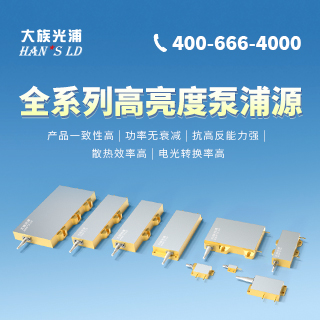
 精彩导读
精彩导读



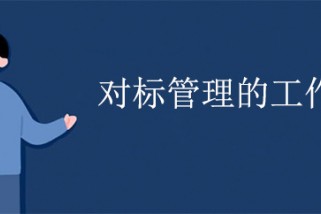
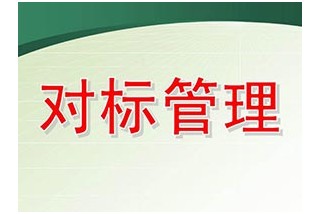
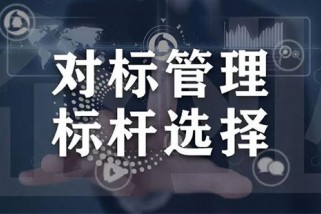
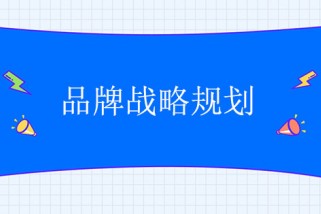
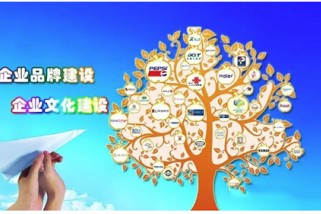

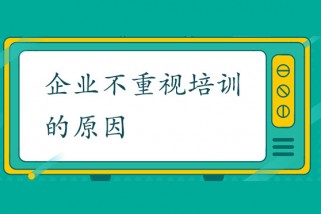
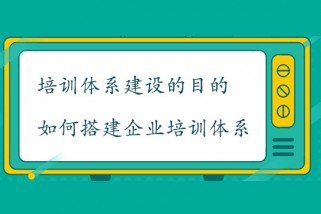

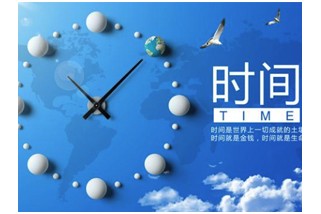
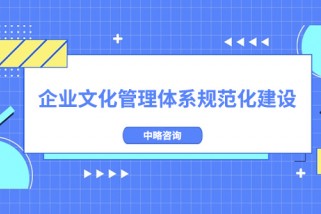




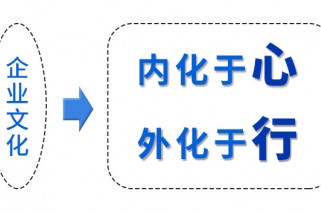
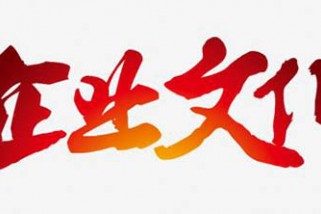

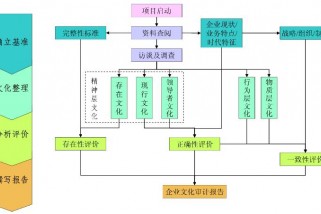

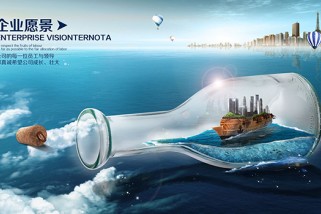



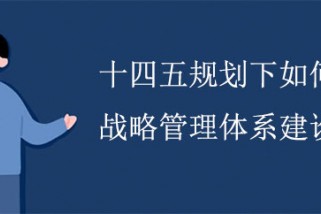

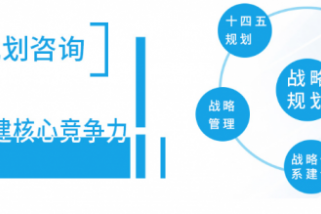
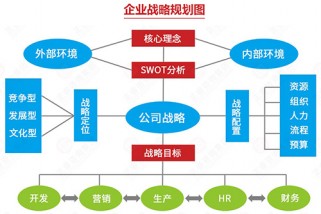
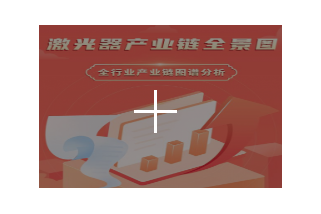
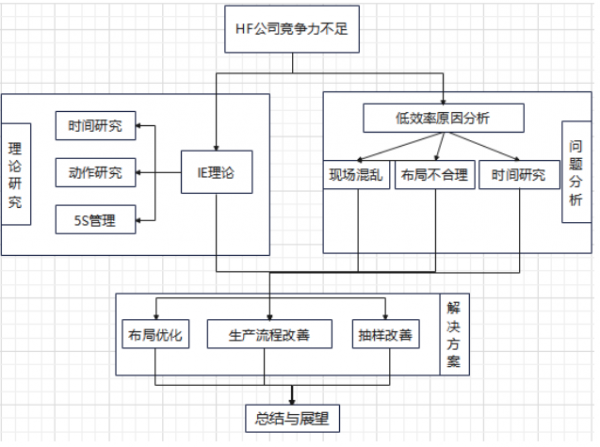
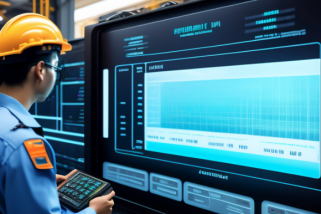
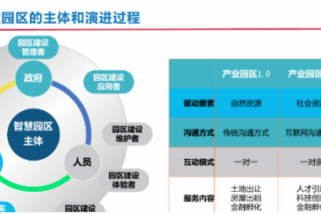
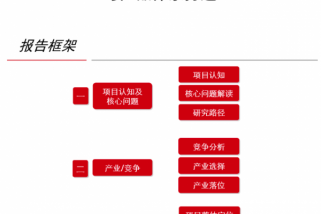
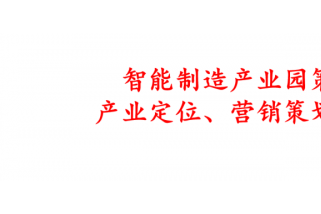
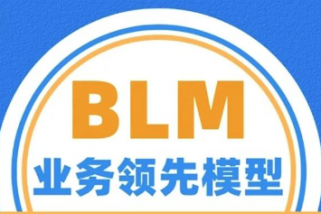
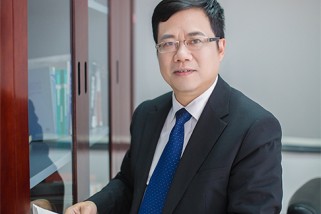
 关注我们
关注我们




